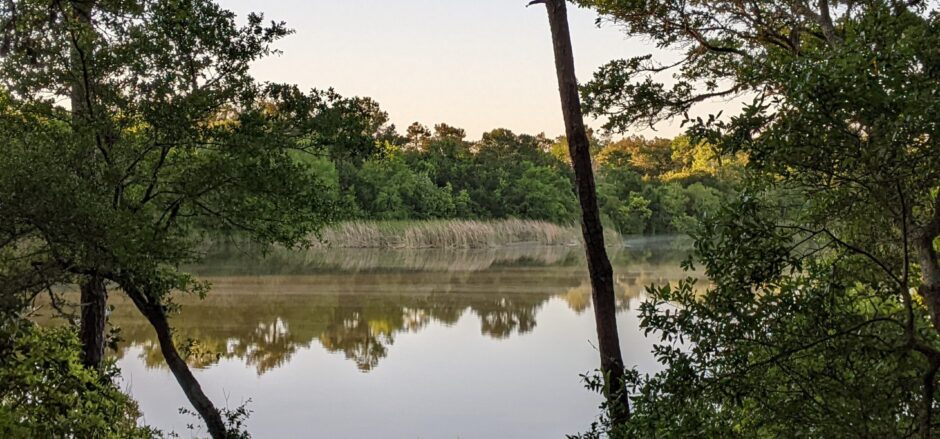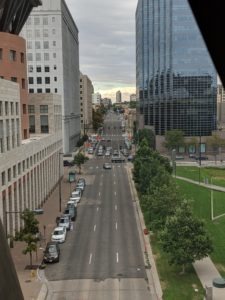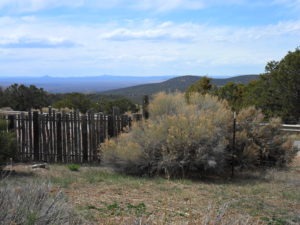European filmmakers seem especially adept at undertakings like “The Sisters Brothers,” 2018. Like the spaghetti westerns of Sergio Leone in their day, French director Jacques Audiard’s film is a re-envisioning. Outsiders who love westerns are more apt to be innovative with the genre. It takes outsiders to see new possibilities in many things.
There’s much meat in that film, but I’m interested in the journey. These cowboy hitmen from a rustic homestead pass through crude beginnings of barely formed towns, gradually enlarging, until they arrive at a town of some size where Eli (John C. Reilly) finds something he’s never seen before on a store shelf. “You interested in that?” the clerk asks. Eli drops the thing as if he’d been accused of stealing, then inquires: “what’s it for?” The clerk explains. It’s a toothbrush. Use with this tin of paste, keep your teeth longer. When they reach San Francisco they see a flush toilet for the first time.
“Dead Man,” 1995, my favorite Johnny Depp, travels in the opposite direction. Director Jim Jarmusch is an American, granted, but clearly an outsider. Look at his filmography. In the long opening scene on the train, our hero in his city clothes goes from sharing the car with people who look like him to those less and less akin, more country, more homesteading, more wilderness. The veneers of civilization lift one by one over the miles, until, by the time he reaches the end of the line the descent is complete: he’s in hell and Bob Mitchum’s in charge.
In such allegories, the city represents civilization. As a devoted urbanite, I’ve seen it that way too. But these 21st century cinematic views are only exaggerations of the ideas we’ve always had about the wild west. Rural, small town life is another thing entirely, subject to its own myths. We extol the virtues of the romantic countryside, the small-town heart of America, where life is closer to the ground and good.
Returning from Taos, we paused in San Luis, population 636, drove the entire length of town, looking in vain for a place to get coffee among the storefronts, all shabby except for the two shiny new marijuana shops. Like towns I’ve seen in Kansas, San Luis’ ends are visible from its middle. At the last block, with open, empty land before us, we spotted a one-story storefront proclaiming itself to be the Town Hall welcome center.
“No,” the pretty young woman at the desk replied, “we don’t have a coffeeshop, but I can offer you a cup.” A Keurig coffee maker sat on a table. Donations welcome. They drive 45 minutes to Alamosa for groceries. There’s a little store in town, but their stock is limited and what they have costs twice as much. There are no jobs. She felt lucky to get this one. Most young people leave, go to Pueblo or Denver.
On the road to Denver from Kansas City, we once inspected a small-town motel with sagging beds, sheets that might not have been changed, gray ring around the tub. Tired as we were, we decided we could manage the fifty miles to the next town of some size, and a clean room.
And yet, stuck in traffic or listening to sirens wail at all hours, I yearn for that idyll—a quiet cottage in the country, less pollution, a slower pace: all the positives we think small town life offers. Sobering facts: rural areas are declining in population, are older and whiter, have lower income and education levels, are more conservative, share some downsides of urban life, like opioid addiction. A friend retired to her small-town family home after a career in the city, found no one she could talk politics with, missed museums and theaters and soon moved back.
American cities have been diverse—if divided—for decades. I lived in Denver’s Northside (now the gentrified Highlands) when most residents were Mexican or Italian; lived in East Denver when we were the only white people on the block in a black neighborhood. How those experiences enriched my life!
Yesterday, at one of my favorite coffeeshops, I admired the barista’s new dreads, saw a dozen young Asian women in bachelorette party identical pink T-shirts, and met my group of old coots, city dwellers all. We might bash Trump, or mention the new Ethiopian restaurant, or celebrate electing our first Hispanic Lesbian to city council because we like her politics, or bash Trump or review an art opening or art house film. Or bash Trump.
I’m guessing all that wouldn’t happen in American small towns. In the way that most stereotypes are based on grains of truth, the movies are accurate. Ah, but as I write this, here comes another siren.



One of my predictions is that artists, looking for cheaper rents, will eventually invade those small, dying, towns and after much travail will endure and bring a new life to the “set-in-their-ways” country folk. This seems logical to me, but it has to happen soon. It will take time to be accepted, for the dying shops to become galleries, coffee houses, DIY workshops. Bicycles and pickups will live together in harmony, and fresh produce will become a staple at the new grocery store. A soft revolution of diversity that will heal our country.
I dream on…
Ah, but what a lovely dream that is!
I have friends who have moved south to escape the big city and find small town properties. One of them is opening a gallery in Raton. Like you say. In the meantime, he has to be careful about what he says about, say, guns.
I know the old town revitalization dream takes guts, money, and the ability to start out hanging by your teeth. I’m not sure it’s a project for oldsters. Young people with imagination and the willingness to live poor for an indefinite time will be the best pioneers. Starting a movie “club” in an old store front and showing westerns and a few choice “art” films on every other Saturday would start the ball rolling. Adding an art gallery for the locals, and serving interesting new recipes as well — food always brings people. Making themselves a part of the community will eventually get the town to enjoy the newcomers. Look at what’s going on in Trinidad. Trying to make it big in the big city is even harder and more heart breaking than building something new.
Oh, this city of ours is something else. And I can only take about four days in the country before I crave a walk to the coffee shop and the chance to run into writerful neighbors. Thanks for this lovely piece, Pat.
And right now I can’t wait to get out of town, but I already know how sweet it will be to come home. Thanks, J-L!
A while ago, my partner and I, dreaming about retirement, thought: northern NM, maybe Taos. Those skies! Then I saw dinner theater in Taos a couple of years ago, and while not bad, it wasn’t the Curious Theater or the Buntport. Nor is there much in the way of movies in Taos, let alone the Denver Film Festival. And art? Don’t get me started. And places to play piano? Not really. Plus, now that I’m retired, I have the time to get together with friends. Friends! With mutual tales of Old Denver and dreams of future creative projects. Plus, in Taos, there is no money for recycling, no bicycle-friendly streets, etc. True, my meditation group is in Taos, but I can drive there now and then for spiritual refreshment.
And yet, why should small town equate with poverty of culture? I see you referenced Phil Normand’s reply below for a dream idea that matches what your friend is doing in Raton. Perhaps it’s starting already.
A few years ago I visited a co-housing development in Golden, one of the oldest in the Denver area. I loved it—folks of all ages living in their own places, but cooperating on gardening, sidewalk shoveling, beekeeping, and many other chores and projects. I think I would’ve seriously considered moving, but the place that was for sale (a 2 story with steep stairs) wouldn’t have worked for Gerri and I. Nonetheless, I was impressed by the concept and the folks I met. I still like the idea, but I’m afraid finding an affordable piece of land for such a community close enough to the metro area to allow easy access to all the wonders mentioned in above comments is not possible in the current market—not to mention the time and energy required to plan and then complete such a project.